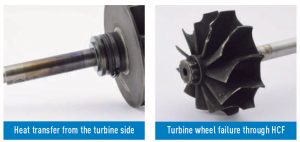There are many articles and technical documents relating to how a faulty turbo can lead to DPF damage, however, the DPF is actually responsible for more turbo related failures than you might think. Here we explore what effect a blocked DPF can have on a turbocharger.
DPF’s (Diesel Particulate Filters) were first introduced in January 2005 with the Euro 4 emission standard, where diesel particulate levels were reduced to extremely low levels to reduce the allowable amount of particulate matter (PM) released into the atmosphere. Reducing the size of PM from the combustion process to this level was not technically possible, so this meant all diesel vehicles after September 2009 were fitted with a filter to capture soot and other harmful particles, preventing them entering the atmosphere. A DPF can remove around 85% of the particulates from the exhaust gas.
A blocked DPF will not work correctly, to clear this blockage there are two types of regeneration which are commonly used to remove the build-up of soot. Newer vehicles engage active regeneration, which is the process of removing the accumulated soot from the filter by adding fuel post combustion to increase exhaust gas temperatures and burn off the soot, providing a temporary solution. Passive regeneration takes place automatically on motorway-type runs when the exhaust temperature is high. Many manufacturers have moved to using active regeneration as many motorists do not often drive prolonged distances at motorway speeds to clear the DPF, constant short distances are not good for the turbo or exhaust system.


